-
$4.40 Cost in Singapore dollars of the cheapest school bag from School Bag Factory.
$17 Average monthly take-home salary of a worker at the School Bag Factory.
$39b GDP of North Korea, home to 25 million people - a tenth of Singapore's GDP.
Inside North Korea
Inside North Korea: Scars behind the mask
The Sunday Times gets to see different aspects of Pyongyang for this special report
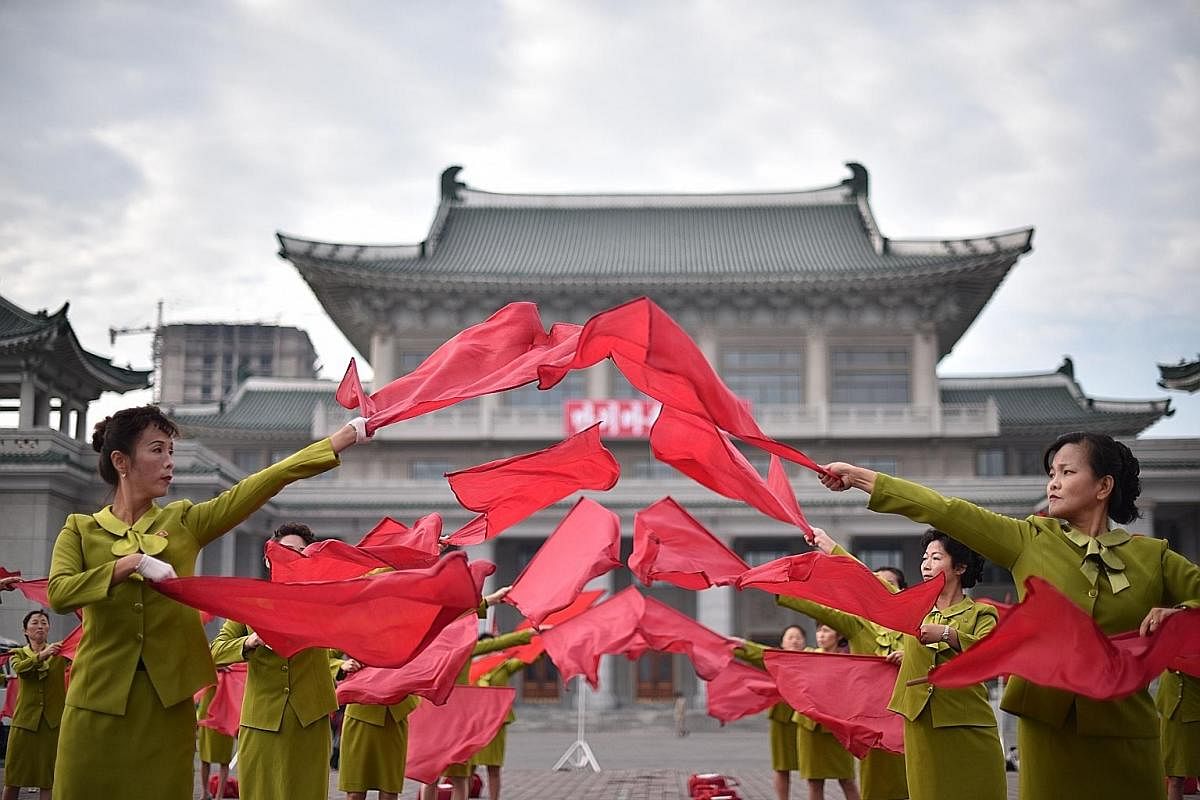
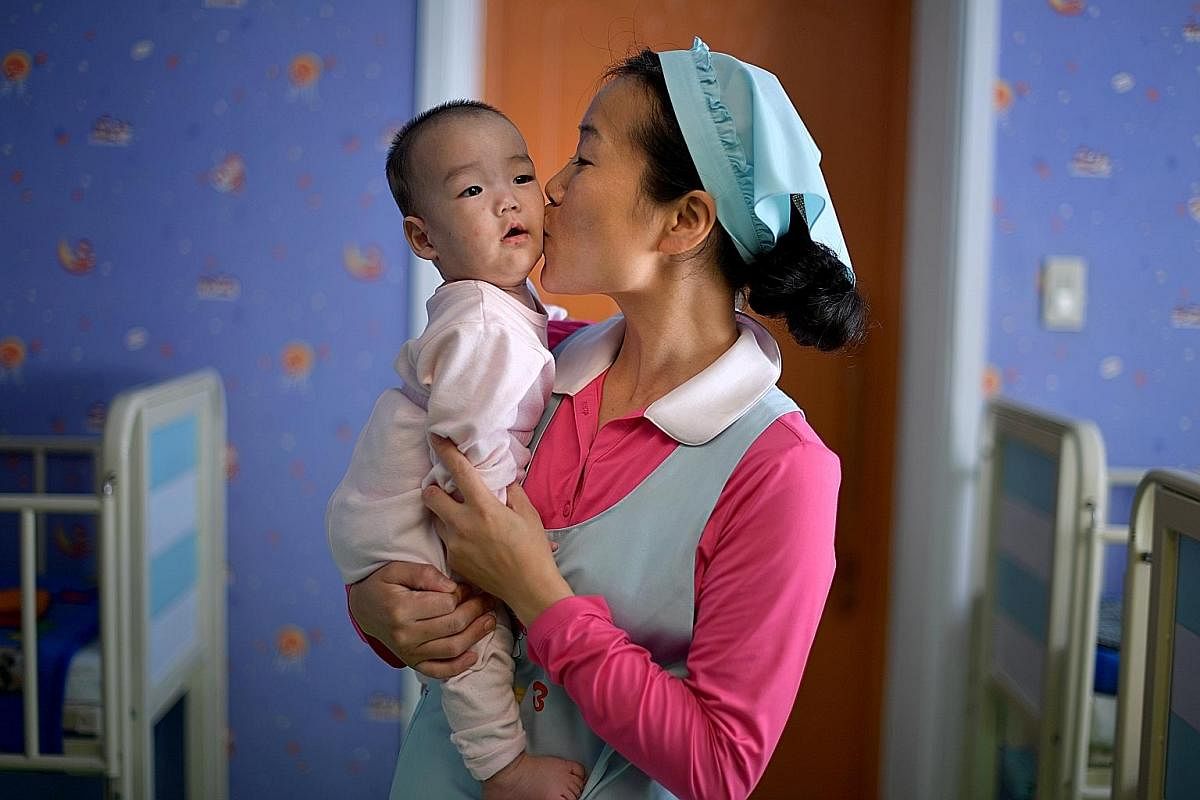
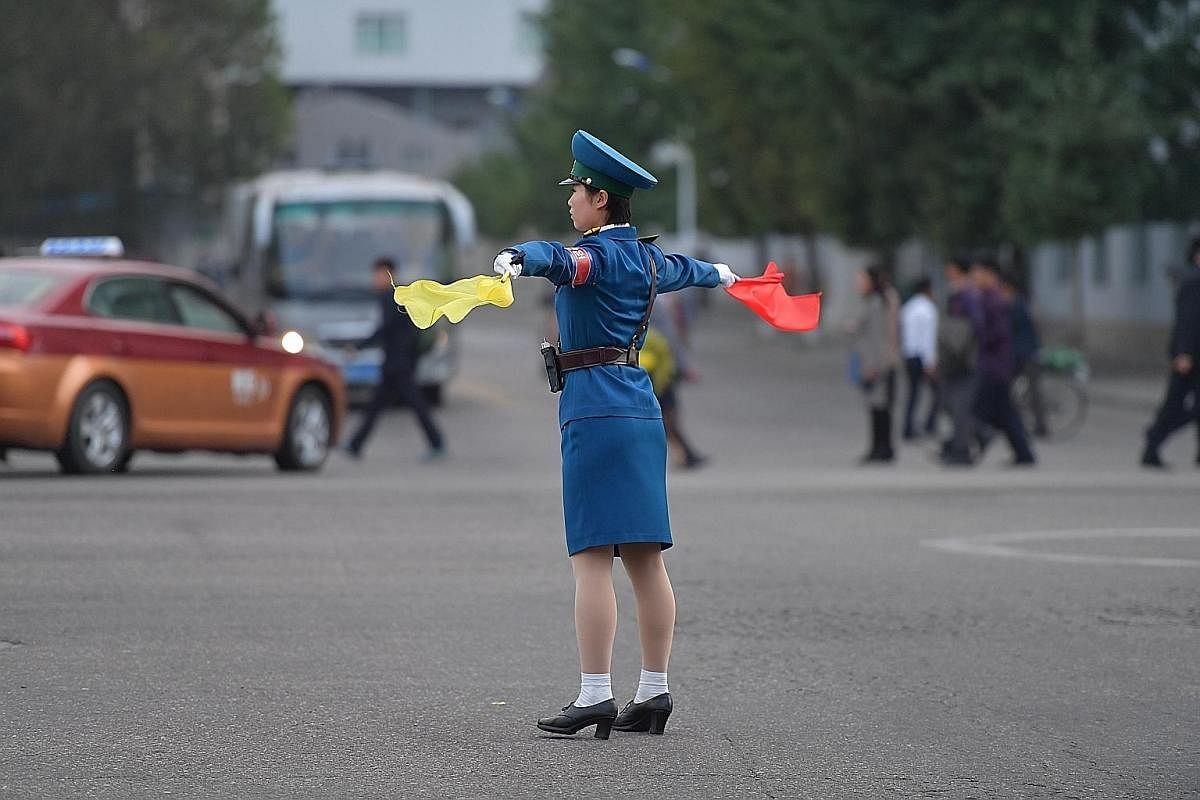
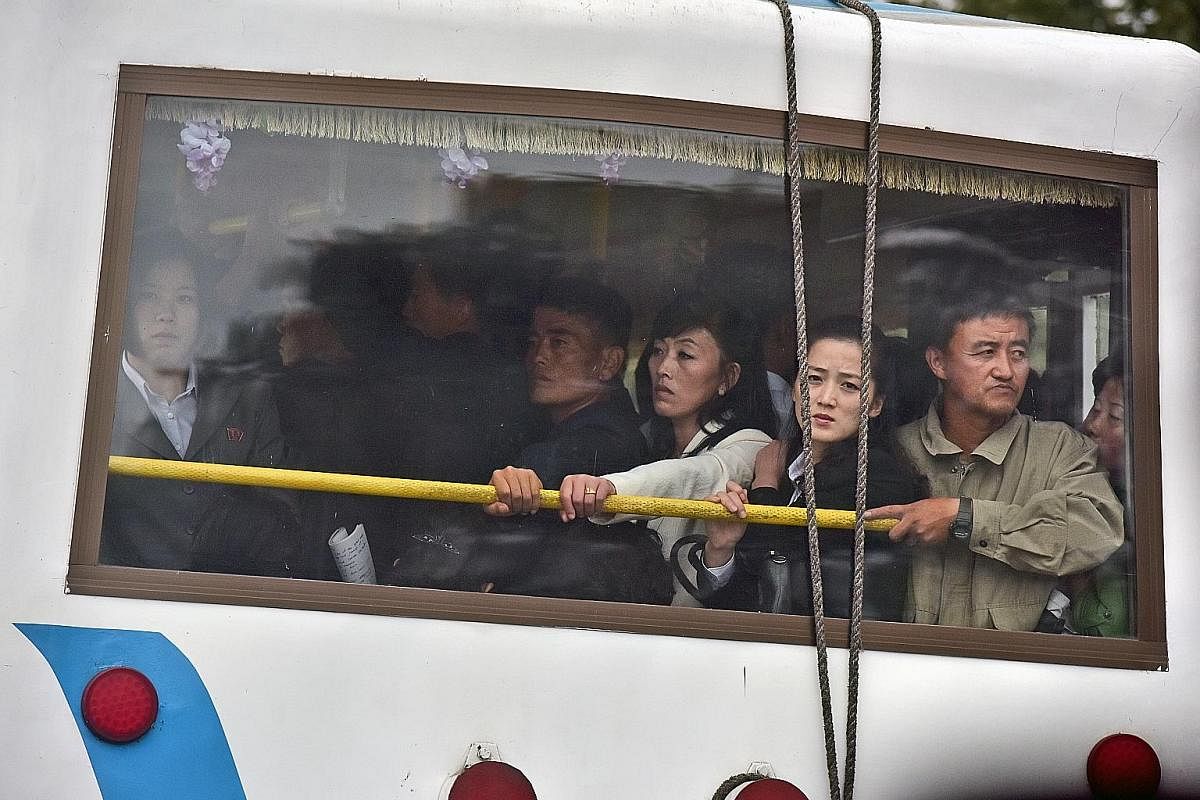
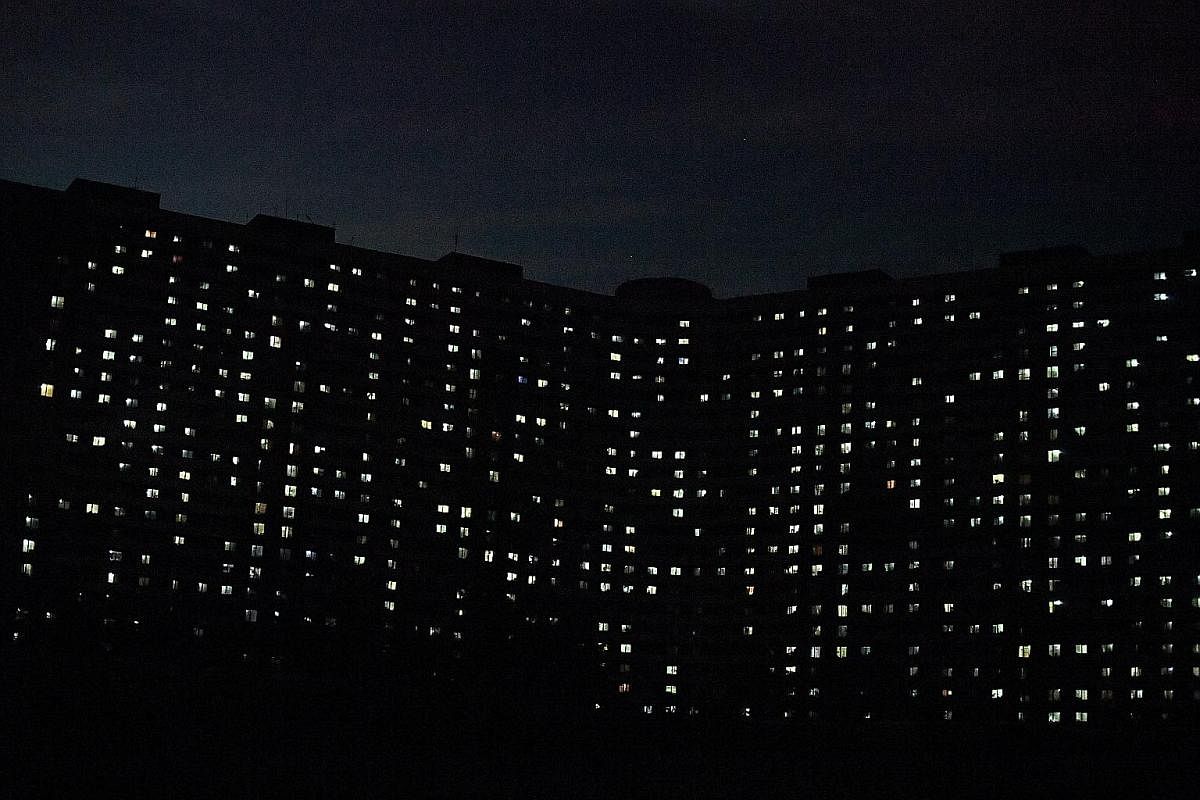
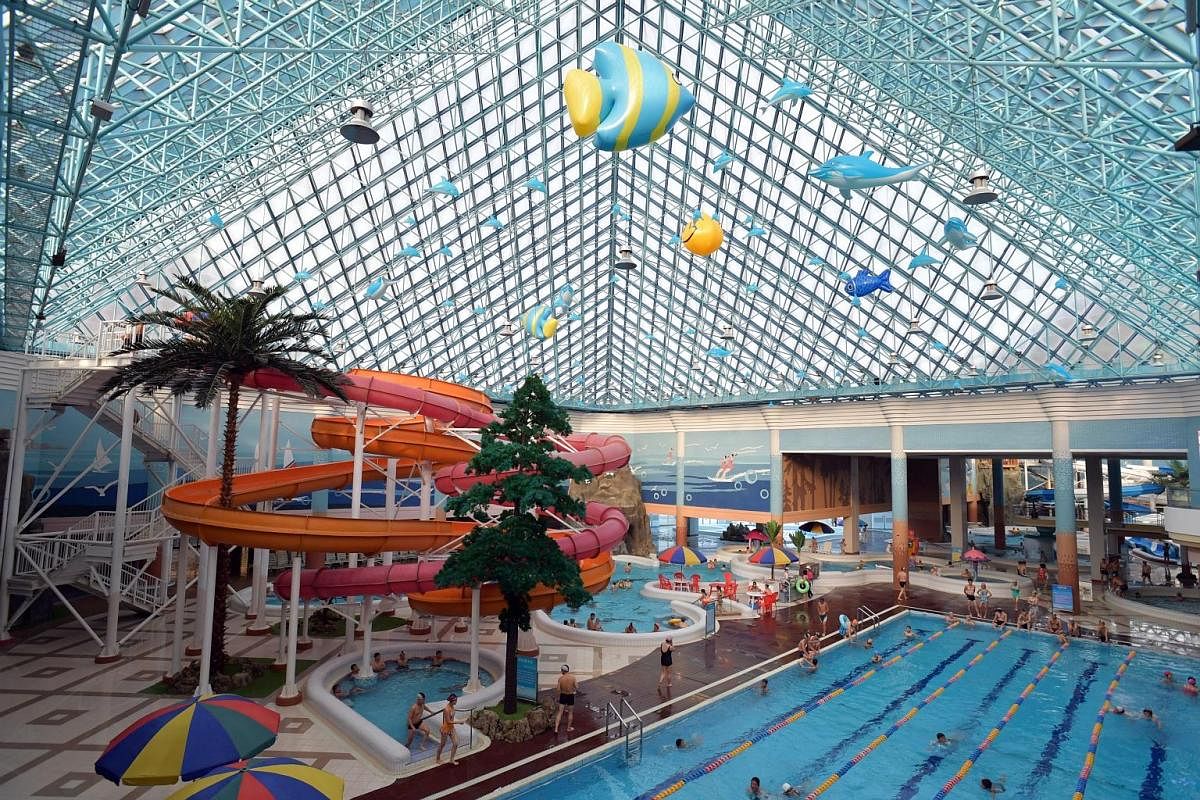
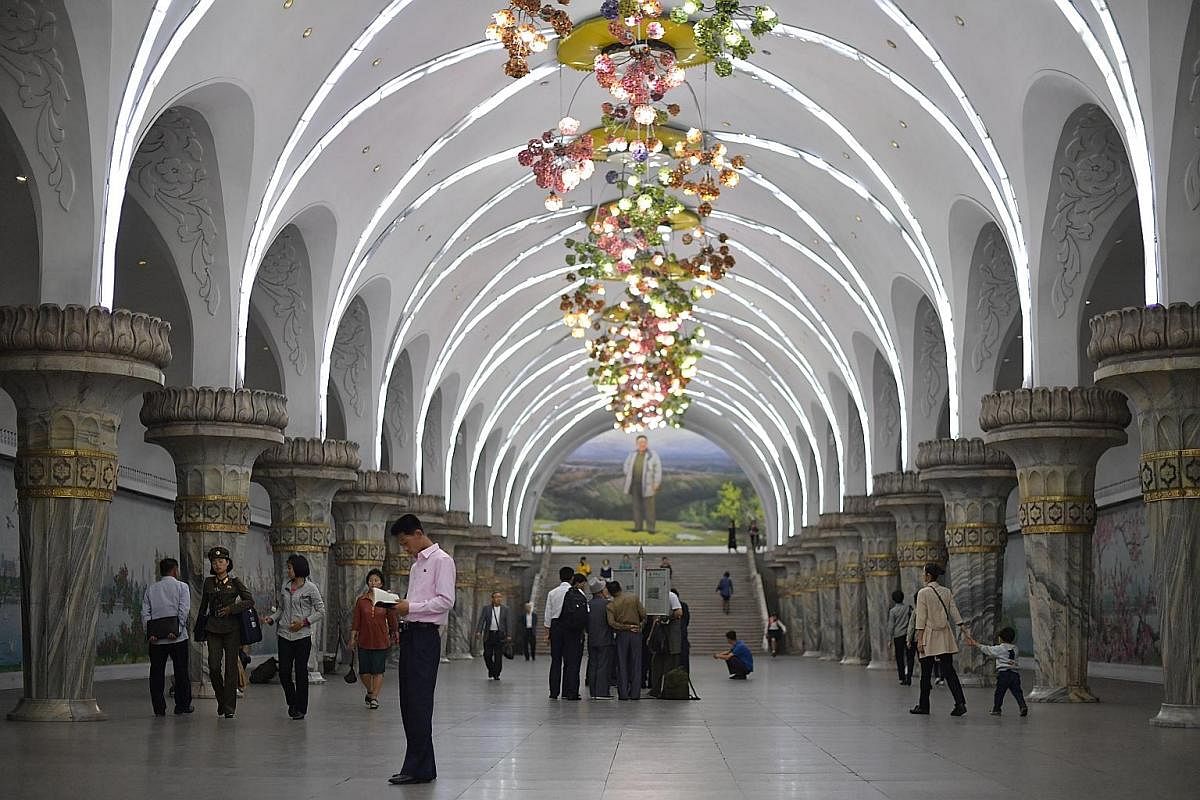
North Korea dresses up its scars in elegant clothing.
A visitor to Pyongyang would see smooth, wide roads - some run four lanes in each direction - with trams and Lexus cars and a string of new taxis that charge US$1 (S$1.36) for every 2km. These are different from the red taxis at hospitals that ferry expectant mothers for free.
If he took the 110m-deep escalator to the bowels of the earth - on which people stand perfectly still for fear of falling - he would be deposited before a Metro station. If it is The Station of Prosperity, he would take in its smooth grey arched ceiling and frescoes of tall buildings and thriving industry.
On the roads he would hear music - bands of housewives in olive-green uniforms beating drums and waving flags to encourage workers on their way to factories in the morning; red-scarfed children marching along the streets, chanting to welcome their parents back in the evening; smiling groups of university girls - each in identical, mandated, China doll hairstyles - railing against the Americans during daytime.
This is the public face of North Korea, the only one that a visitor is allowed to see. It seems a modern metropolis, confident in its skin. Of late, it has perfected its camera smile.
The first chill of winter is blowing over the city when we arrive. The North Korean authorities have agreed to let The Sunday Times see some parts of Pyongyang while two of their officers escort us.
They admit that they are showing us "model" facilities in the heart of a capital city that is so pampered that other North Koreans cannot visit it without first obtaining a permit. But sometimes the mask slips to reveal a more painful truth.
At the Pyongyang Orphanage and Nursery, a miniature train rattles along a circular track bearing children who whoop and wave each time they catch your eye. Sixty teachers work in eight-hour shifts to care for 100 orphans from Pyongyang, each aged below four.
Why are there 100 young orphans in Pyongyang? Lecturer Byong Song Ok hesitates, then says that the number of orphans is perhaps 30. The rest are children of sportspeople who are representing the country in international competitions.
But, still, why are there 30 children aged below four who have lost both parents in a city of 2.6 million people? "Natural disasters," says Ms Byong.
We are shown an infirmary where children lie on bunk beds. "What is he suffering from?" we ask about a boy. She replies: "He can't sleep. It comes from a lack of nutrition."
The shortage of food has haunted the country since the 1990s, when flooding and famine conspired to kill up to one million people. North Koreans call it the Arduous March. "I remember growing up when there was so little food to eat," says Miss Kim Jong-A, 27, from the Committee for Cultural Relations With Foreign Countries, who accompanies us. "Things are much better now."
Each citizen is given 300g of rice for each meal, fresh vegetables and some fish every two weeks.
But these are subsistence rations and they must buy the rest themselves. Some still seem unable to, and the latest World Hunger Index report released this month says that two in five North Koreans are malnourished. We did not see any overweight people in our seven days in the country.
STATEMENT BUILDINGS
From an orphanage and a hungry child we move to the other extreme. Pyongyang's new children's hospital comes with its own helipad, a telemedicine facility that links it to hospitals across the country and top-end equipment from Italy and Germany. It has its own kindergartens and a staff of 180 doctors to tend to 200 children daily.
The eye hospital next door - inspired by the Singapore National Eye Centre, an official tells us - offers free Lasik surgery to those its doctors deem fit.
The country has always attempted to make a statement through striking projects, even if some - like the 105-storey pyramid-shaped Ryugyong Hotel which stands unfinished 30 years after construction began - failed to deliver a punchline.
Even its currency is a mirage. One US dollar buys you 8,000 North Korean Won at government-run money changers. But to inject it with artificial strength, it insists that the official exchange rate is NKW 900 to a US dollar.
We are shown the Munsu Water Park - just slightly smaller than Universal Studios Singapore - where real sea water has been transported to take its place among nine indoor pools - one just for mothers and children - with temperature kept at a balmy 27 deg C. It also has nine saunas on offer and a giant bucket splashing water on children. The entry charge is US$1 and for another 13 US cents, you can get a haircut and a half-body massage.
If that sounds cheap, consider this: The average person earns S$119 a month. Of course, officials are keen to point out that this is offset by the free housing, education and healthcare that the state provides.
But a visit to the Pyongyang School Bag Factory shows just how empty some pockets are.
The factory - built in 140 days with its U-shaped structure "like a mother's embrace" according to its spokesman - produces backpacks for schoolchildren that retail at between NKW26,000 (S$4.40) and NKW34,000. Asked how much the average worker at the factory takes home, she confesses it is around NKW100,000 a month. In other words, $17 or the cost of three or four schoolbags.
CHALLENGES ARISING FROM SANCTIONS
Professor Kim Sang Hak from Pyongyang's Economic Research Institute acknowledges the challenges facing a country of 25 million people, whose gross domestic product of US$28.5 billion is less than a third of Mr Bill Gates' net worth and a tenth of Singapore's GDP.
He says that the country has been steadily raising food production on its cooperative farms as double - and even triple - cropping kicks in. The sanctions imposed by the United Nations, which economically isolate the country, will make it harder for the state to fund free housing, education and healthcare. "But if we lose these social benefits, we lose our socialism," he says.
Among the finest examples of free public housing is the new home of Professor Ri Man Kun, a telecommunications scientist from Kim Chaek University of Technology. It is a sprawling, five-room 220 sq m affair on the 19th floor, with 24-hour electricity supply. The average North Korean starts life in a 30-40 sq m home and can graduate to a 100 sq m four-room flat after 30-odd years of contributing to society, and endures power cuts of up to 11 hours a day.
All eyes are drawn to the electricity meter in the corner with its languidly turning disc. "Our electricity quota is so large that I don't even have to look at the meter," says Mrs Ri proudly.
Homes are allotted quotas for the amount of power they can consume each month, after which they must buy more. The professor enjoys a quota of 450 kilowatt hours per month, more than three times the average home's quota. A typical Singapore household consumes 468 kwh each month.
The shortage of power, which Prof Kim assures us is being addressed with new hydroelectric power stations, plays tricks with the landscape.
We drive three hours from Pyongyang to see the demilitarised zone that separates it from South Korea. The North Korea one sees in the evening, while on the way back, is nothing like the preening Pyongyang that we left earlier that morning.
The road is rutted. The silhouettes of the power stations spewing smoke against the orange sky are made more stark by the darkness of the unlit housing blocks in their shadow.
Even Pyongyang, as we enter it, wears a more subdued mood. There are no street lamps lighting up its wide roads. The towering, uncompleted Ryugyong Hotel stands sheepishly visible from anywhere in the city.
This is Pyongyang in its nightclothes. When dawn breaks, it will put on its public face and dress elegantly again.
• IN TOMORROW'S EDITION: • COMPLETE ISOLATION AND EDUCATION OF NORTH KOREANS • THE MAN BEHIND PYONGYANG'S MONUMENTS
Join ST's Telegram channel and get the latest breaking news delivered to you.
A version of this article appeared in the print edition of The Sunday Times on October 29, 2017, with the headline Inside North Korea: Scars behind the mask. Subscribe
